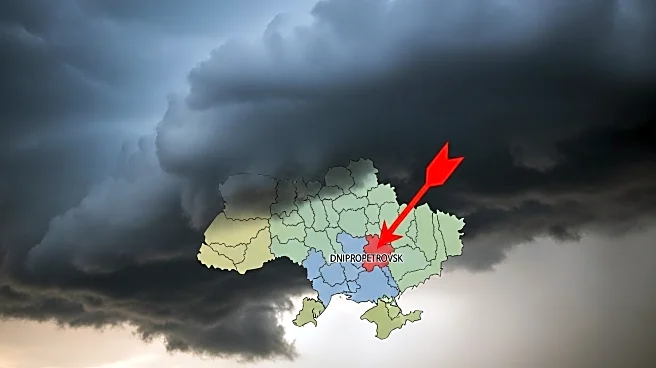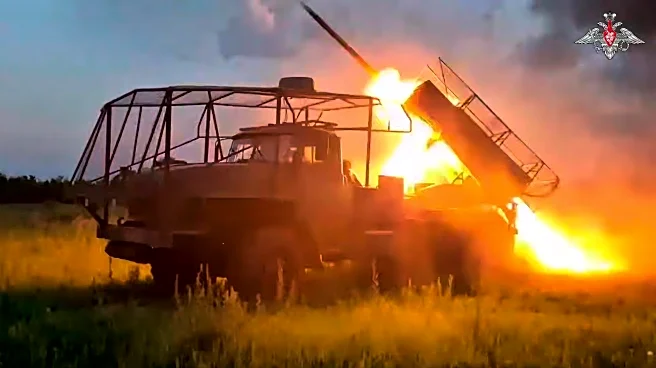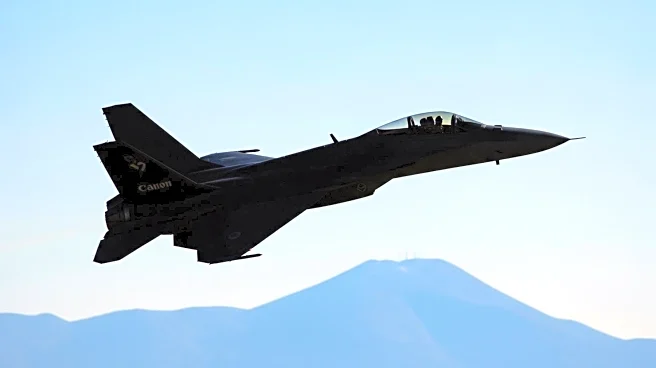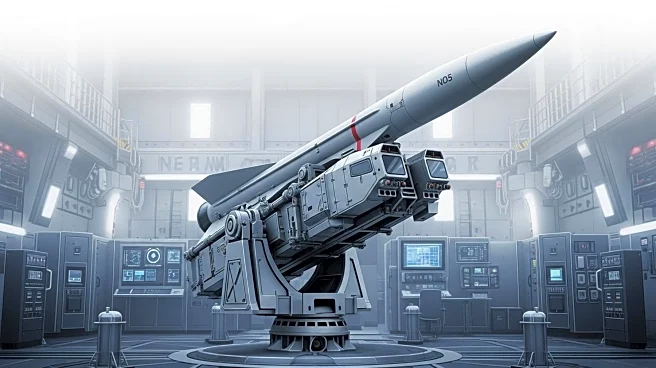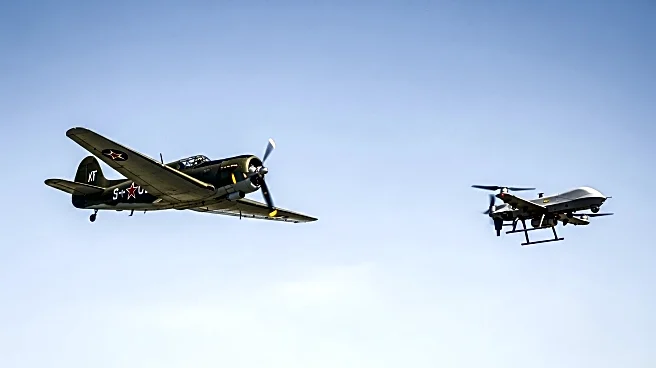What's Happening?
Ukrainian military intelligence, known as HUR, has reportedly damaged a Russian Buyan-M-class small missile ship near Russian-occupied Crimea in the Azov Sea. The operation involved a drone strike that targeted the ship's radar system, followed by a direct attack on the missile carrier by special forces. The ship, stationed in Temryuk Bay and equipped to launch Kalibr cruise missiles, was forced to retreat from its patrol zone after the attack. The incident is part of a series of Ukrainian operations using naval drones, missiles, and long-range drones, which have compelled Russia to reduce its naval presence in occupied Crimea. Previous Ukrainian attacks have destroyed several Russian vessels, including the Caesar Kunikov landing ship and the Sergei Kotov patrol ship.
Why It's Important?
This development underscores the ongoing strategic efforts by Ukraine to weaken Russian naval capabilities in the region. By targeting vessels capable of launching cruise missiles, Ukraine aims to disrupt Russian military operations and reduce the threat posed by these ships. The successful strike on the Buyan-M-class ship highlights Ukraine's growing proficiency in using advanced military tactics and technology, such as drone warfare, to counter Russian forces. This could potentially shift the balance of power in the Black Sea and Azov Sea regions, impacting Russia's ability to project military power and influence in these areas.
What's Next?
The continued Ukrainian attacks on Russian naval assets may lead to further strategic adjustments by Russia, possibly involving increased defensive measures or repositioning of naval forces. Additionally, these actions could provoke a stronger military response from Russia, escalating tensions in the region. International stakeholders, including NATO and neighboring countries, may closely monitor these developments, considering potential implications for regional security and stability.
Beyond the Headlines
The use of drones and special forces in naval operations reflects a broader trend in modern warfare, where technology plays a crucial role in achieving tactical advantages. This shift towards high-tech military engagements could influence future defense strategies and investments by countries worldwide, emphasizing the importance of technological innovation in national security.



